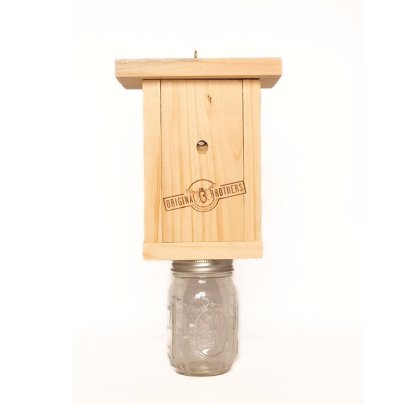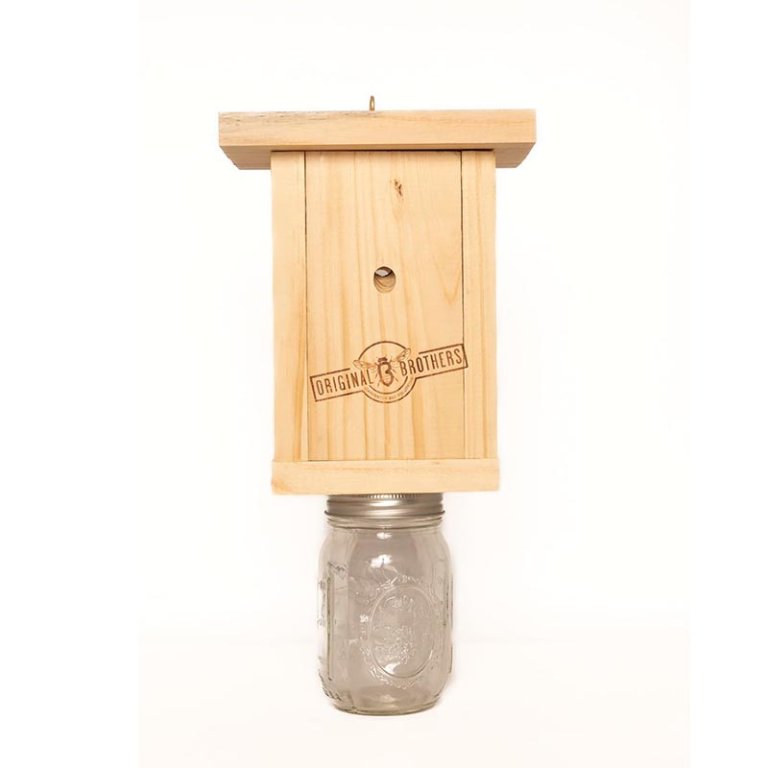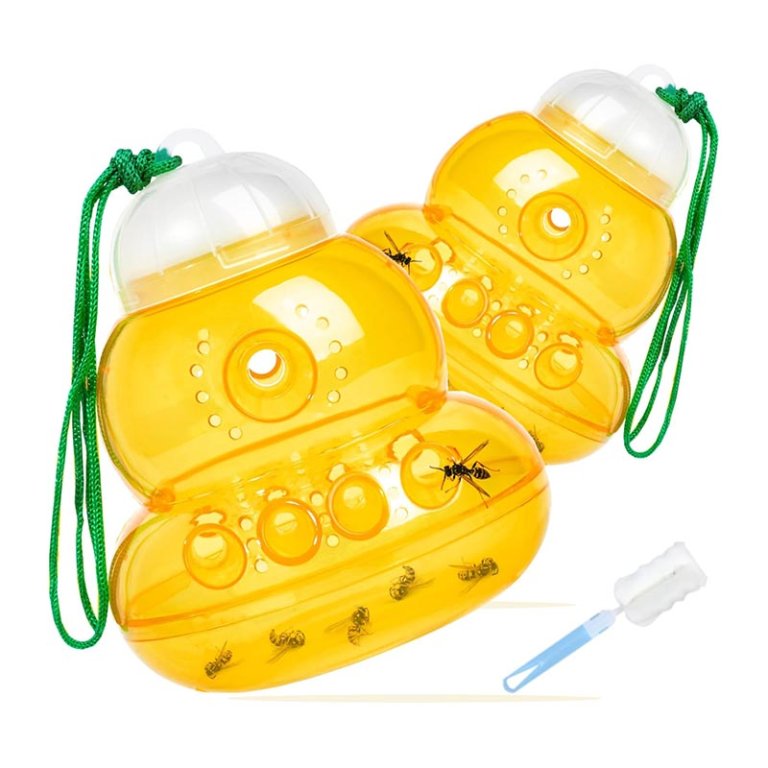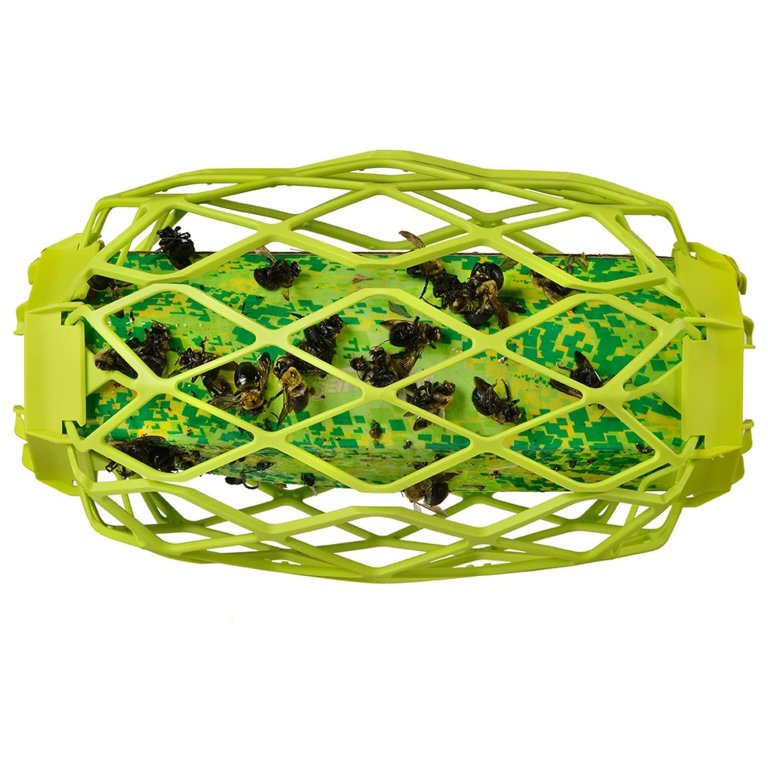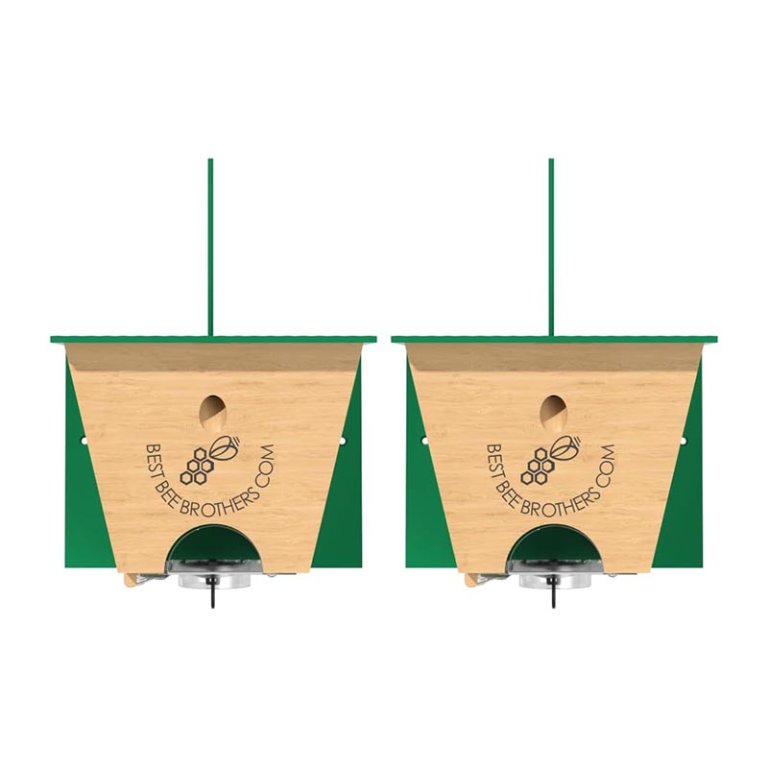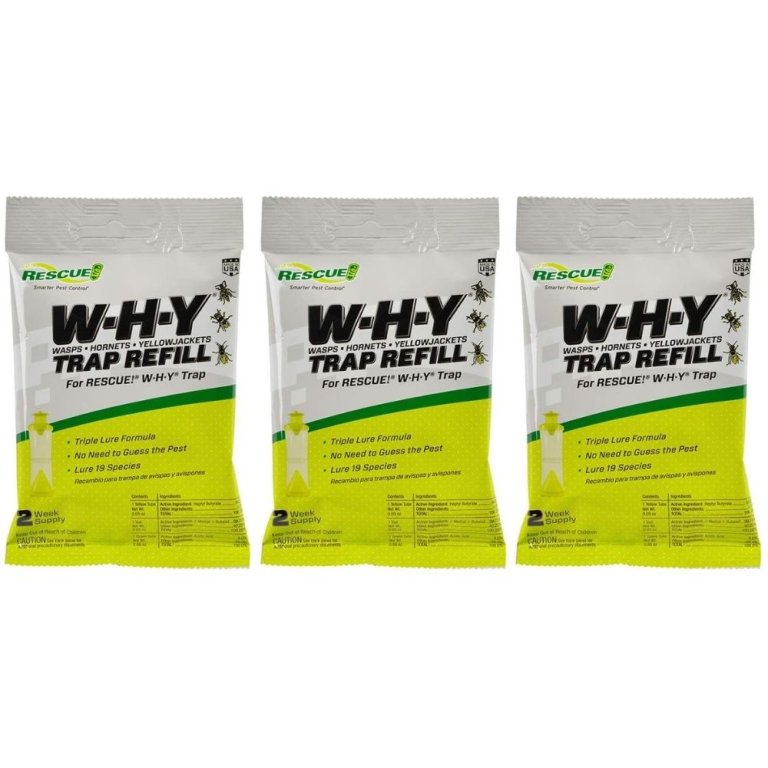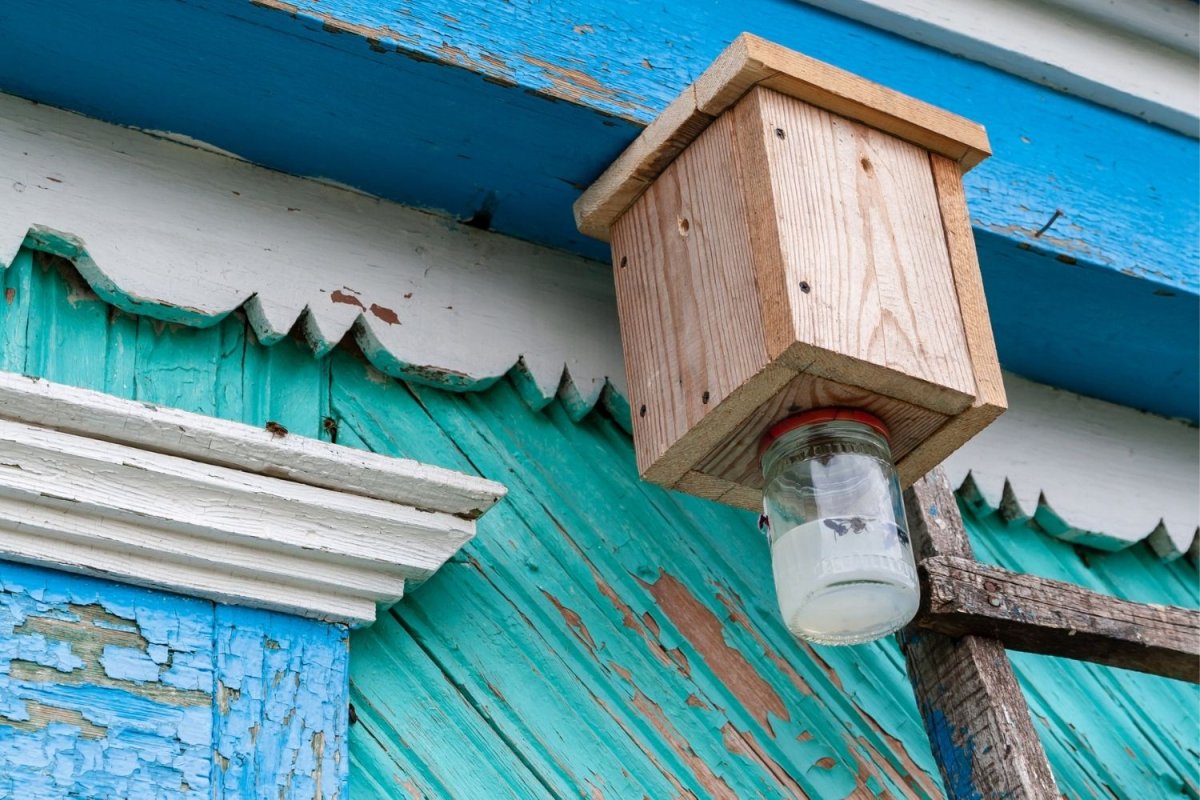
We may earn revenue from the products available on this page and participate in affiliate programs. Learn More ›
Carpenter bee traps are a practical way to protect your home from the damage these burrowing insects cause. While carpenter bees are relatively peaceful and play an important role in pollination, they are known to make nests inside wooden structures, including homes, which can lead to water damage, rot, and even collapse. Traps for carpenter bees offer effective pest control by luring these woodworking bees away from your home.
However, given the mixed online reviews for these products and the serious issues these bees can cause, choosing the right carpenter bee catcher is essential. To aid you in getting rid of carpenter bees, we researched dozens of popular products and contacted a pest control expert for advice. Based on our efforts, we selected the Original B Brothers Carpenter Bee Trap as our top pick for its effective performance, attractive wood construction, and easy installation. Whether you opt for this bee collector or another carpenter bee attractant on our list, we’re confident each option is among the best carpenter bee traps on the market.
- BEST OVERALL: Original B Brothers Carpenter Bee Trap
↓ Jump to Review - BEST BANG FOR THE BUCK: Stingmon Plastic Carpenter Bee Trap 2-Pack
↓ Jump to Review - BEST STICKY: Rescue! Carpenter Bee TrapStik
↓ Jump to Review - BEST PROFESSIONAL-GRADE: Best Bee Brothers Carpenter Bee Turbo Trap 2.0
↓ Jump to Review - BEST ATTRACTANT: Rescue! Non-Toxic W-H-Y Trap Attractant Refill Kit
↓ Jump to Review
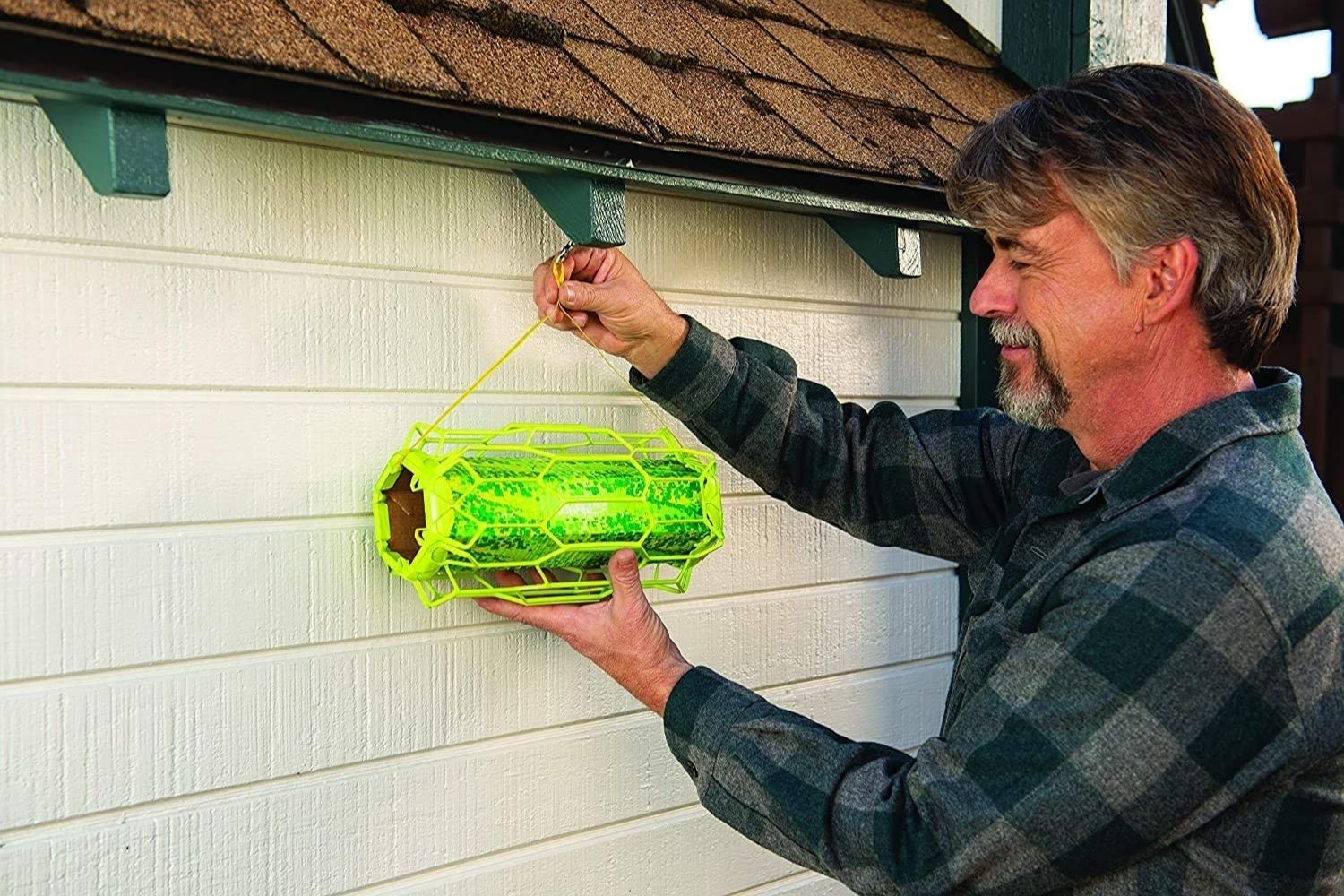
Carpenter Bee Traps Comparison
| Product | Type | Weather Resistance | Reusable |
|---|---|---|---|
| Original B Brothers Carpenter Bee Trap | Bee collector | Suitable spring through fall | Yes |
| Stingmon Plastic Carpenter Bee Trap 2-Pack | Bee collector | Suitable spring through fall | Yes |
| Rescue! Carpenter Bee TrapStik | Sticky trap | Suitable spring through fall | No |
| Best Bee Brothers Carpenter Bee Turbo Trap 2.0 | Bee collector | Suitable spring through fall | Yes |
| Rescue! Non-Toxic W-H-Y Trap Attractant Refill Kit | Attractant for use in all kinds of sticky or collector traps | Used in traps typically suitable spring through fall | No |
Our Top Picks
If you need to know how to get rid of carpenter bees, we recommend you start by reviewing this lineup of top carpenter bee repellent options. Each product acts as an effective carpenter bee treatment to help protect your home—without the use of chemical insecticides.
Best Overall
Original B Brothers Carpenter Bee Trap
What We Like
- Attracts by mimicking natural nest
- Durable wood and glass construction
- Easy to install; safe around kids and pet
What We Don’t Like
- May have to experiment with placement
- Glass can break if wind knocks it into something
Specs
- Type: Bee collector
- Weather resistance: Suitable spring through fall
- Reusable: Yes
The Original B Brothers carpenter bee trap is a simple solution for eliminating infestations. Its natural pine design mimics a carpenter bee nest, luring these insects inside through an angled hole. Once inside, bees seek out the light at the bottom, where they become trapped in the attached mason jar.
Made by actual brothers, Brian and Bradley Blazer, this trap is non-toxic, reusable, and comes with everything you need for installation, including two screw hooks and a hanging chain. While it’s made to be used without any sort of bait, some homeowners have reported better results after adding an attractant. You may also need to experiment with placement initially, but once you catch an initial bee, it will release pheromones that attract others. The B Brothers recommend one trap for every 15-foot radius of coverage.
Get the Original B Brothers carpenter bee trap at Amazon or Original B Brothers.
Best Bang for the Buck
Stingmon Plastic Carpenter Bee Trap 2-Pack
What We Like
- Attractive and colorful design
- Doesn’t use harmful chemicals
- Bottom detaches for easy cleaning
What We Don’t Like
- Plastic construction may not provide long-term durability
Specs
- Type: Bee collector
- Weather resistance: Suitable spring through fall
- Reusable: Yes
This bee trap is a great choice for homes with kids and pets thanks to its simple plastic construction and chemical-free design. Its bright colors and tunnel-lined structure help it resemble a flower, and by filling the bottom with beer, wine, honey, or vinegar, it naturally attracts carpenter bees. Once a bee enters a tunnel, it cannot escape.
This pick comes in both blue and orange, and each color also features a solar-powered UV light that helps attract insects at night. In addition to bees, these traps can help you get rid of wasps and yellow jackets. Simply hang it using the included lanyard, add bait you likely already have in your kitchen, and detach the bottom when it’s time to empty the trap. Just use care not to pull too hard so you don’t accidentally break off the plastic tabs that secure the base.
Get the Stingmon carpenter bee trap at Amazon.
Best Sticky
Rescue! Carpenter Bee TrapStik
What We Like
- Ready to install right out of the box
- Requires no emptying or cleaning—simply take down and throw away
- Effective against most flying insects
What We Don’t Like
- Some reports it falls apart in wind and heavy rain
Specs
- Type: Sticky trap
- Weather resistance: Suitable spring through fall
- Reusable: No
This carpenter bee sticky trap uses a bright, attractively colored design to lure carpenter bees, hornets, wasps, and yellow jackets, offering a chemical-free way to manage infestations. Once insects land on the powerful adhesive, they’re unable to fly away—and the pheromones they release attract even more pests. The TrapStik comes with a rope for easy hanging, either vertically or horizontally, and is surrounded by a built-in guard so birds and small animals don’t get stuck.
While the glue on this trap isn’t strong enough to stick to human skin, it’s still a good idea to install it out of reach of children and pets. Though the weather-resistant adhesive is meant to withstand rain, sleet, and snow, some users report it’s not as durable as the manufacturer claims. And although it doesn’t use any attractant chemicals or poisons, its effectiveness relies partly on the pheromones from previously trapped insects, meaning you’ll need to catch at least one to get the process going. Keep in mind that carpenter bee activity typically peaks from early March through June.
Get the Rescue! TrapStik carpenter bee trap (various pack sizes) at Amazon, Walmart, or Target.
Best Professional-Grade
Best Bee Brothers Carpenter Bee Turbo Trap 2.0
What We Like
- Doesn’t trap honey bees or other native pollinators
- Large capacity and touch-free emptying
- Safe for use around kids and pets
- Durable, weather-resistant construction
What We Don’t Like
- Bait is sold separately
- Works better after catching at least one bee
Specs
- Type: Bee collector
- Weather resistance: Suitable spring through fall
- Reusable: Yes
The Best Bee Brothers Turbo Trap 2.0 is an upgraded option with a greater capacity for getting rid of bees that have reached infestation levels. It uses a four-chamber funnel system and a secure “Bee Vault” that rely on bees’ sense of sound and smell to lure and retain them. The 2.0 version has a roughly 20 percent larger capacity than the original, though the manufacturer still recommends one trap per every 15-foot radius.
This option has a few nice features those who don’t like bugs will appreciate, including a spring-loaded release door that attaches to a 9-foot string for no-touch disposal as well as a large viewing window for monitoring catches and fill level. It’s made from wood and durable recycled plastic, and unlike many catchers, it has three entry holes instead of just one. However, since part of its power lies in bees using their pheromones to attract other bees, you might want to buy a tube of the brand’s Bee-licious bee bait to kick off the collection process.
Get the Best Bee Brothers carpenter bee trap (various pack sizes) at Amazon, The Home Depot, Walmart, or Best Bee Brothers.
Best Attractant
Rescue! Non-Toxic W-H-Y Trap Attractant Refill Kit
What We Like
- Cost-effective refill for existing traps
- Attracts a host of insect species
- Ideal for use as additional bait in existing traps to extend their effectiveness
What We Don’t Like
- Requires replacement every 2 weeks
Specs
- Type: Attractant for use in all kinds of sticky or collector traps
- Weather resistance: Used in traps typically suitable spring through fall
- Reusable: No
This attractant refill is made for baiting Rescue! sticky traps, but you can also use it with other brands of bee collectors and traps. Though it does not rely on any type of chemical agent, this pick is effective for killing carpenter bees and a range of other flying insects, including hornets, wasps, yellow jackets, paper wasps, and bald-faced hornets. The active ingredient, heptyl butyrate, is a nontoxic food-grade chemical that produces a fruity odor that lures bugs to the trap and keeps them there.
Though it’s safe for use around kids and pets, Rescue! recommends installing this bait refill in traps placed at least 20 feet from places you commonly enjoy outdoor activities. It will remain attractive to insects for about 2 weeks, at which time you’ll need to replace it with a fresh refill.
Get the Rescue! W-H-Y carpenter bee trap (various pack sizes) at Amazon, Ace Hardware, Walmart, or Target.
Or, DIY Your Own Carpenter Bee Trap
Folks looking to avoid toxic chemicals or interested in a more hands-on approach to dealing with a carpenter bee problem may wish to build their own wood-boring bee trap. Our guide detailing how to make a carpenter bee trap is suitable for beginners and should only take about 30 minutes to complete. Since materials will likely run you $20 or less, this DIY trap is a very cost-effective removal option.
Jump to Our Top Picks
How We Chose the Best Carpenter Bee Trap
We looked at the wide range of carpenter bee solutions available on the market and did our research to curate a list of top picks for the best bee trap products across a range of categories. Based on our efforts, we found several sticky traps and collector traps to meet users’ preferences.
Since you may already have an existing trap and simply need to improve its effectiveness with a bit of carpenter bee bait, we included an excellent attractant option that should fit most traps. Also, we’re aware you might not want to get too up close and personal with the aftermath of insect collection, so we made sure to feature options that are easy to empty, clean, and dispose of.
You may notice our list doesn’t include any spray for carpenter bees. This is because most carpenter bee spray products use toxic chemicals that don’t meet our sustainability guidelines. However, if this is the route you’d like to take, our guide on the best wasp sprays has some products that will work.
What to Consider When Choosing a Carpenter Bee Trap
There are a few things to think about when shopping for a carpenter bee trap. Before deciding on the best trap to keep your home safe from burrowing bees, it’s important to determine the type of trap to use. There also are other critical factors to consider, like weather resistance, ease of use, and versatility.
Bee Collector vs. Sticky Traps
Carpenter bee traps fall into two categories based on the way they trap insects and how they look.
- Bee collector carpenter bee traps are made of either plastic or wood, the former designed to resemble a birdhouse and the latter mimicking flowers that attract bees. These traps feature holes or tunnels invading carpenter bees enter before they are funneled through a series of winding tunnels that lead to collection receptacles. The bees become stuck there and die, releasing pheromones that draw in more carpenter bees. Collector traps are reusable, so you won’t need to invest in new traps every year.
- Sticky traps use attractants, baits, lures, fluorescent colors, and multidimensional patterns to draw carpenter bees, wasps, yellow jackets, and other flying insects to an adhesive strip, where they become stuck and die, releasing pheromones that attract more insects. Sticky traps are not reusable, so you’ll need to replace them when they’re full or when the adhesive becomes ineffective from accumulated dirt, dust, or debris.
Weather Resistance
Any pest control solution used outside the home needs some type of weather resistance to prevent it from becoming completely ineffective after the first rain. Since most bee collector traps are made of wood, glass, or plastic, they are well suited to outdoor environments. They also often have sloped roofs that help prevent water from getting in.
Sticky traps may be more susceptible to the elements since the adhesive can freeze or be weakened by rain. Even if they don’t get wet, their adhesive can lose its power if dirt and dust blow onto them. Still, most sticky traps are designed to last at least a couple of weeks, if not a couple of months.
Ease of Use
Protecting your home from invading carpenter bees doesn’t have to be difficult, especially since time is of the essence to prevent cosmetic or structural damage. Fortunately, carpenter bee traps are relatively easy to use. Simply hang the trap in a location frequented by carpenter bees, such as the top corner of the house or inside a wooden shed, and dump the container once it’s full of dead bees.
Sticky traps are about as easy to use as bee collectors, but it’s a good idea to place them out of reach of curious kids and pets. They may also require a bit more attention than wooden traps, as you’ll need to replace them every few weeks or months, depending on the product. Also, if the sticky trap is very successful, the adhesive will fill up quickly and require replacement sooner.
Both bee collectors and sticky traps can be baited with a bee, hornet, and wasp attractant. Common attractants use the active ingredient heptyl butyrate to lure bees to the trap with a fruity odor, which can also attract wasps, hornets, and yellow jackets, taking care of more than one pest with a single trap.
Versatility
Bee collector traps are a great option for drawing in carpenter bees, and their natural design makes them safe for homes with kids and pets. Plus, they will not negatively impact local insects or wildlife. However, they generally don’t attract as many types of insects as sticky traps, so they may not help if you also have hornets, wasps, or yellow jackets.
Sticky traps are more versatile for eradicating a variety of pests. The adhesive is completely indiscriminate about what it catches, and the bright colors and multidimensional shapes draw in a broad range of flying insects. The drawback is that they can catch unintended wildlife, like butterflies, honey bees, bumblebees, and even small birds, so it’s important to look for a product with a protective design and place it away from flowering plants.
FAQs
If you have questions about carpenter bee prevention or similar topics, the following answers to some of the most commonly asked questions could help.
Carpenter bee traps should be put out at the beginning of spring and left out all summer. Since dead carpenter bees release pheromones that draw live ones into the trap, it’s a good idea to keep them up even if you aren’t still seeing bees.
The best place to put a carpenter bee trap is high on any corner of the home so that the bees have full access to the trap and it’s easy for them to see the entrance.
Baits and attractants are good options for drawing carpenter bees into the traps. Heptyl butyrate is the chemical primarily responsible for attracting carpenter bees, wasps, hornets, and yellowjackets, which is why the Rescue! W-H-Y carpenter bee trap is one of the best attractants available.
Yes, buying a carpenter bee trap is absolutely worth it. If you have an infestation, it can cause not only cosmetic but also structural damage to your home. In addition to repairing and treating affected areas, carpenter bee traps are an inexpensive and effective way to help eliminate the problem.
According to Dr. Tracy Ellis, an Entomologist at FarmSense, “Yes, carpenter bee traps should be emptied periodically to maintain effectiveness and prevent odors or decay from attracting unwanted pests.”
While homemade carpenter bee traps work, Dr. Ellis points out carpenter bees are considered beneficial for pollination. She says, “The long-term solution should be to restore and treat wooden structures to deter carpenter bees rather than relying on traps.”
Because carpenter bees are drawn to untreated and unpainted wood, you can help prevent a carpenter bee infestation by treating wooden structures and keeping them in good condition. Dr. Eillis recommends that you “Apply protective finishes, paints, or varnishes regularly to exposed wood surfaces to deter carpenter bees.” She also suggests removing dead and decaying trees and logs from your property as they can act as nesting sites.
